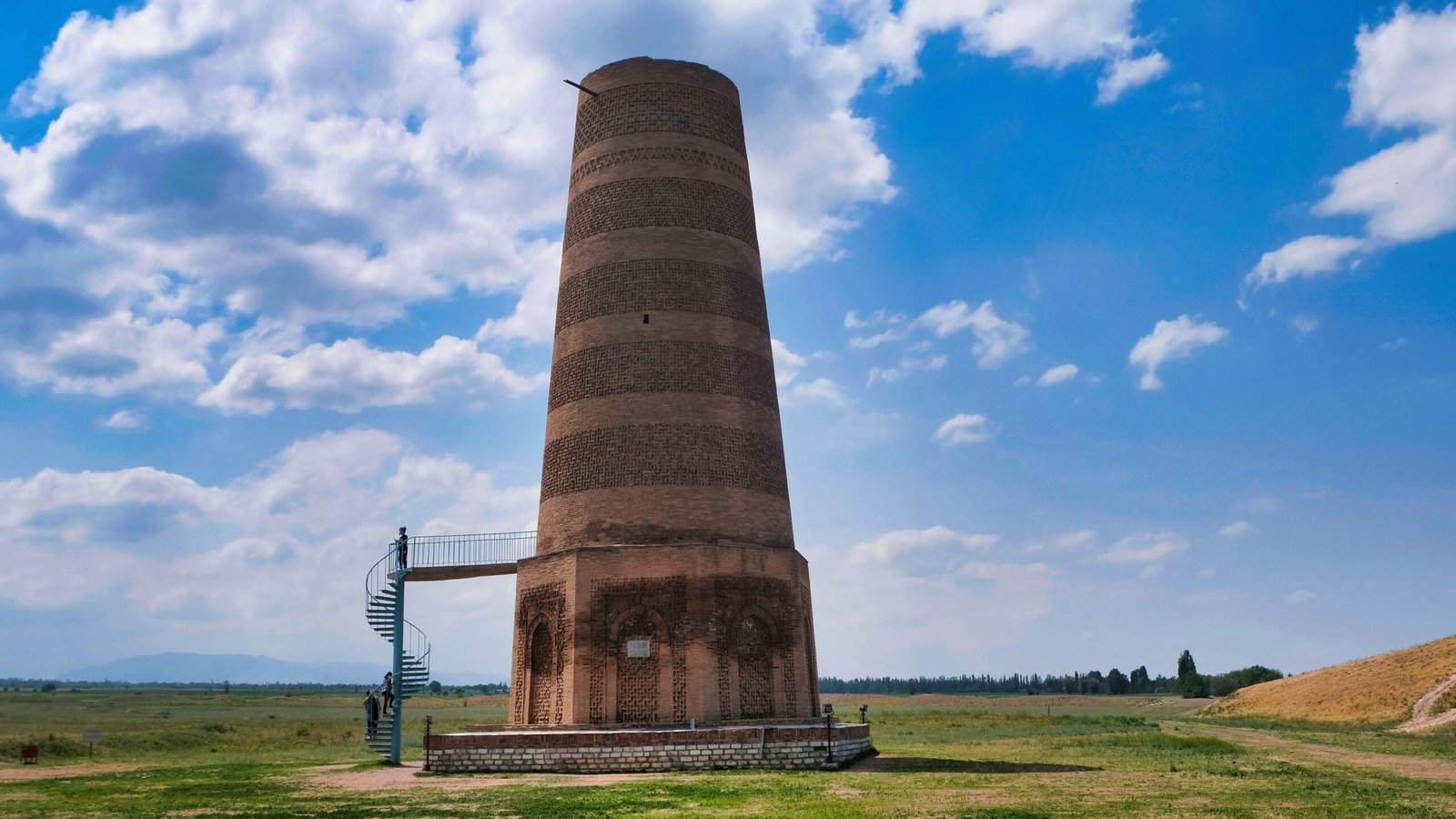The Burana Tower is situated close to the city of Tokmok in the Chuy region of northern Kyrgyzstan, around 80 kilometers (50 miles) east of the country’s capital, Bishkek. One of Kyrgyzstan’s most important historical landmarks, this striking old minaret is still standing today. One of Central Asia’s most well-known minarets, Burana has been protected as a Unesco World Heritage site.
WORKING TIME: 9:00 – 19:00
CONTACT NUMBER: 0554 224 697
GO TO LOCATION: Make a road
Back in history
Constructed between the 10th and 11th centuries, the 45-meter (148-foot) Burana tower provided a commanding view over the old city of Balasagun, which was established in the 9th century by the Karakhanids.
Karakhanids were first officially Islamic state in Central Asia. Because of them most of the Central Asian countries are Muslims.
Burana means “minaret” in the language of the ancient Arabic people. According to mythology, a monarch erected it to shield his only daughter from a prophecy that she would perish at the hands of a Black Widow spider bite. Notwithstanding the father’s best attempts, the young daughter was doomed to this terrible outcome. After then, the tower served as the king’s daughter’s tomb.
The minaret was damaged by several earthquakes. In the 1970s, when there were concerns that the tower would fall, it was renovated.
The Burana Minaret
The Burana minaret is now an open-air architectural and historical complex. Excavation finds, primarily fine paintings and sculptures from the Middle Ages, are displayed in a modest museum.

The 36 hectares (89 acres) site has mausoleum ruins, petroglyphs from the second century B.C., and several “Balbals,” or Turkish era (6th century) funeral sites.
The minaret itself displays the craftsmanship of the Karakhanids. The minaret is 9.3 meters (29.5 feet) broad at the base and just 6 meters (20 feet) wide at the top. The museum has pictures of the minaret taken before it was restored. The locals used fallen building materials to create their own homes.
The 25 m (82 ft) high tower may now be reached by guests via two stairs, one on the exterior and one within. From there, the Chuy valley, Tokmok, and the Ala-Too mountain range are all magnificently visible.
There are many clay mausoleum foundations visible at the location. The 1970s saw their discovery. A little farther along the trail are some stunning examples of “Balbals,” 6th-century memorial stones honoring fallen warriors, and petroglyphs from the Chuy area dating back to the 2nd century B.C.
Fees
- Entry fee for the Burana minaret: 60 KGS
- Entry fee for the museum: 40 KGS
How to get there?
From Bishkek, you may go to the Burana Tower in a single day. You must first travel to the city of Tokmok. At the western bus station, you may get a marshrutka, or public bus, to Tokmok. You will be there in less than two hours and pay about 300 KGS.
Taking a cab is the most convenient method to go from Tokmok to Burana Tower. The driver and you will have to haggle over the price; it should come to about 300 KGS. Additionally, there are public buses that travel to Burana Tower from Tokmok.
But if you are out of time and want to comfortably get there with our nice driver, then you can always contact us. One day tour to Burana Tower – 180$/car (3-4 people can fit)
